Do you dream of walking around your art room, listening to gentle music, observing your artists deeply engaged in their art making process while you sip your tea?
Let’s be honest, this rarely happens!
Sometimes our students get off task, are resistant to participating, talk excessively and be a challenge to manage. It happens to us and it even has a place in an art-making space. But for your sanity as well as the various learning styles in your art room, try not to make this the norm.
Oftentimes students’ boredom, insecurity, and frustration can present as poor behavior in the art room. Meeting students where they are will sometimes be an exercise in patience and creativity. But it can be done.
If you have some new techniques in your classroom management toolbox, here are 8 behavior management strategies to support a joyful and productive learning environment for all students:
1. Establish Rules. Create a few general rules for your classroom that provide a success path for your students and a structure for you to refer to when a student misbehaves. Remind students of your expectations at the beginning of each class as part of your opening routine.
Keep it short and to the point. Here’s a simple list of rules:
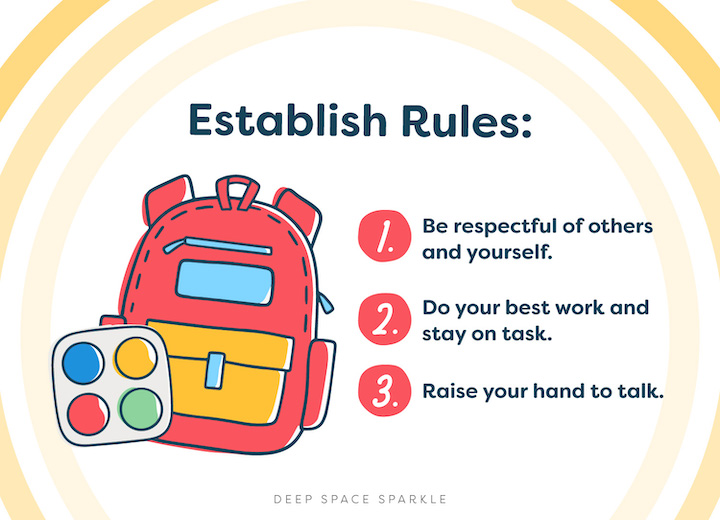
– Be respectful of others and yourself
– Do your best work and stay on task
– Raise your hand to talk
2. Implement Consequences. Your classroom rules will not have weight unless there are consequences for not following them. The best consequences are simple and draw little attention towards the misbehaving students.
A warning followed by time them in a take-a-break chair and them a letter home is an example of one three-step series of consequences.
3. Visualize Rules and Consequences. Post your rules and consequences for students to see and for you to easily refer to. Make them colorful and sparkly if you want, but make sure they are visible.
4. Teach Routines. Teach each routine thoroughly by demonstrating the process for students and even having a few volunteers show the class how it’s done.
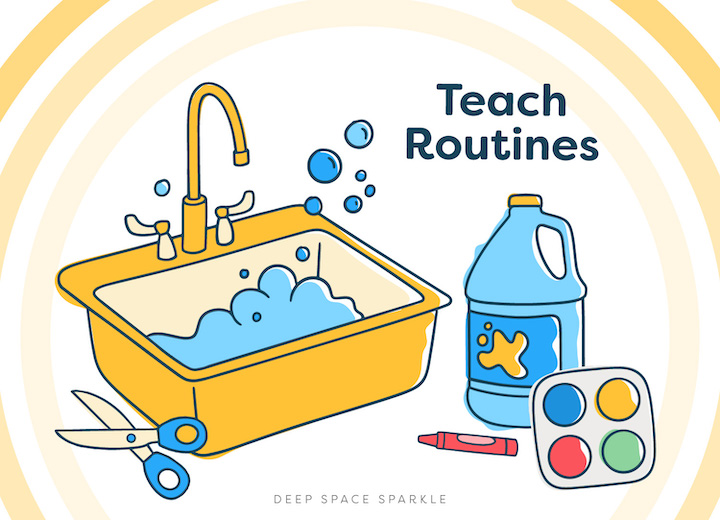
Instead of assuming that students know what to do with their dirty paintbrushes, avoid poor behavior by showing students (in a highly detailed way!) what they need to do to be successful.
It will take time to demonstrate each classroom routine, but once you do, your students will feel proud because they know how to successfully function in your art room.
5. Build Relationships. A simple way to build connections with your students is to know your students’ names and use their names often. Keep your seating chart nearby when you teach and in-hand while you walk around during work time.
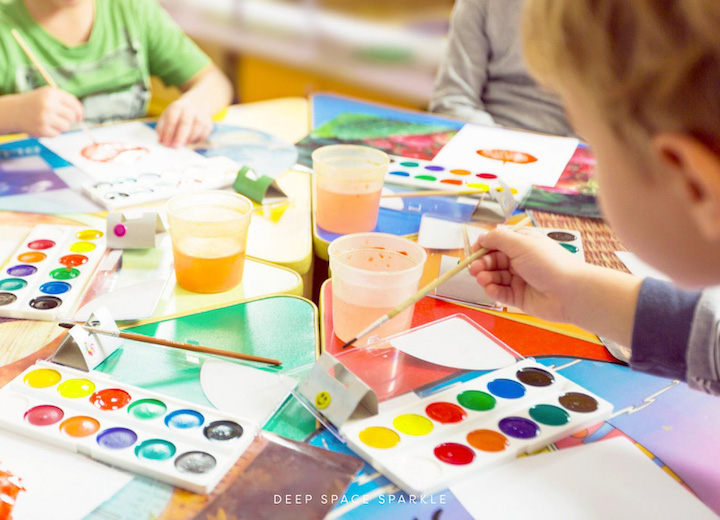
Calling students by name shows then you care. This goes a long way in addressing both positive and negative behavior.
Another way to build rapport with your students is to mentally give challenging students a fresh start every time they enter your classroom. Do not assume and judge the students who misbehaved the time before, instead give then a “clean slate” to make great choices today.
6. Include Movement Breaks. Schedule in opportunities for students to stand up and move so that they can get their energy out in movement before it comes out in misbehavior.
Lead students in a minute of stretches or invite students to take a two minute “gallery walk” around the room to check our everyone’s artwork.
7. Use Positive Wording. Instead of saying don’t do that, say do this instead so that students hear positive words instead of negative words. For example, put your hands in your lap instead of don’t touch that supplies.
8. Give Talking Opportunities. Students love to express their thoughts and feelings, and their energy often comes out in blurting and interrupting. Provide frequent chances for students to share verbally so that they can use that energy in a positive way.
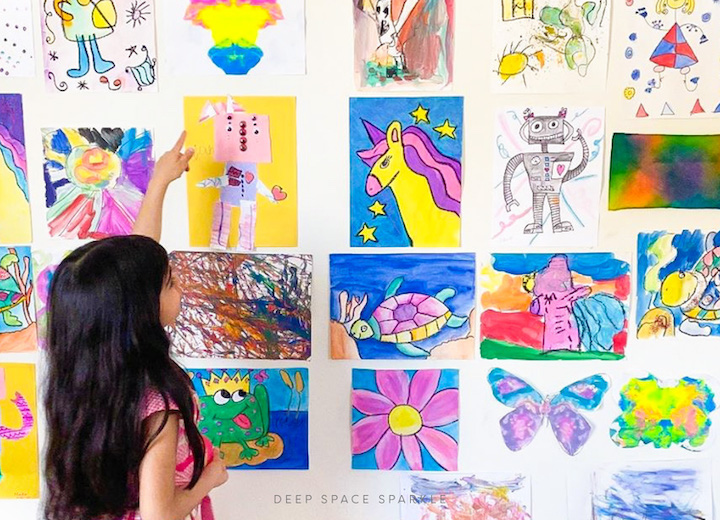
Examples are instructing students to repeat “Ooo! Ahh!” after you show them the lesson example, showing a work of art and asking students to raise their hands to share what they notice about the artwork, and keeping the conversation flowing with questions during your instruction time.
Classroom Procedures
Students love predictability. Many behaviors can be addressed through maintaining consistent classroom procedures.
Remember that each teacher has a different style and some people prefer a bustling, loud and boisterous environment while others prefer a quiet one. You choose what you’d like and form your management style around it.
Think through the following classroom procedures and how you would model them. While it might feel redundant, modeling these procedures frequently from the beginning of the school year and throughout when refreshers are necessary is key.
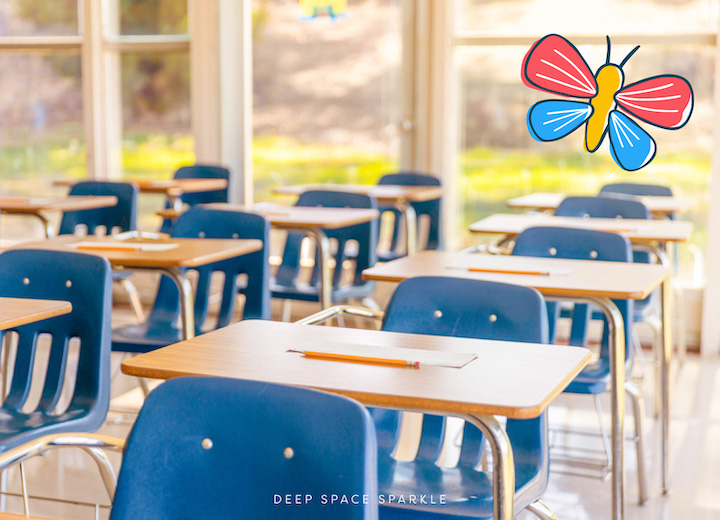
– Entering the art room
– Watching demonstrations
– Traveling around the room
– Coming to the carpet to read a book before a lesson and returning to seats
– Passing out and collecting materials
– Sharpening pencils
– Asking questions and participating in discussion
– Using the sink (washing hands and paintbrushes)
– Putting away artwork
– Cleaning up work spaces
– Lining up at the door and exiting the room
Consider classroom jobs or reward systems that you’d like to implement. Some teachers use reward systems and others choose to provide incentives to encourage positive behavior.
Whether or not you’d like to use one in your classroom is completely up to you. You can do individual points, stickers or whole class rewards such as extra free time or using an exciting new material. If you are new to a school, you might ask if there is a school wide reward system used.
Interested in more tips and tricks to streamline all things art teaching? The Ultimate Guide for New Art Teachers covers all that you need to feel organized and ready to take on this school year like a pro.
The guide is designed to simplify organizing and managing your art room and materials so that you can focus on teaching and building connections with students. You already have strong teaching skills and experience and this guidebook is an amazing resources to add to what you know.
Here are some things that you’ll find in our Ultimate Guidebook for New Art Teachers:
Tips to help with positive mindset
Behavior management strategies
Tips for organizing your classroom
Guide to frequently used materials
We are thrilled to have you with us and can’t wait to support you in making this year your best one yet.
The Sparklers’ Club is filled with curriculum materials, lesson plans, and resources to keep you not only organized but full of inspiration and ideas. Sign up to join the waitlist for The Sparklers’ Club to be notified about out next enrollment.
What classroom procedures of yours need a little reshaping?
Do you have a behavior strategy that works wonders for you every time?
Share below so that we can help.
– Patty and the DSS Creative Team
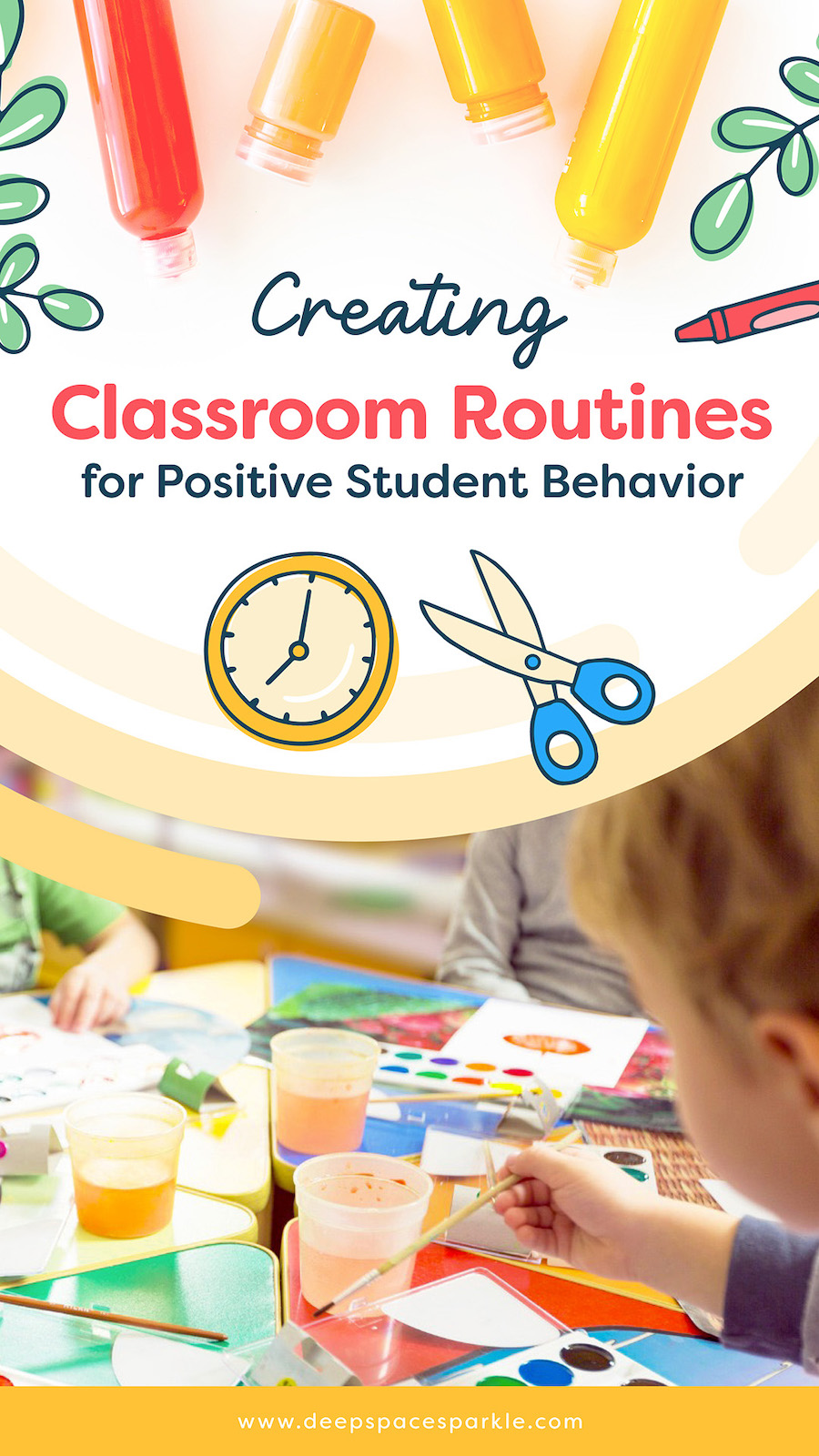

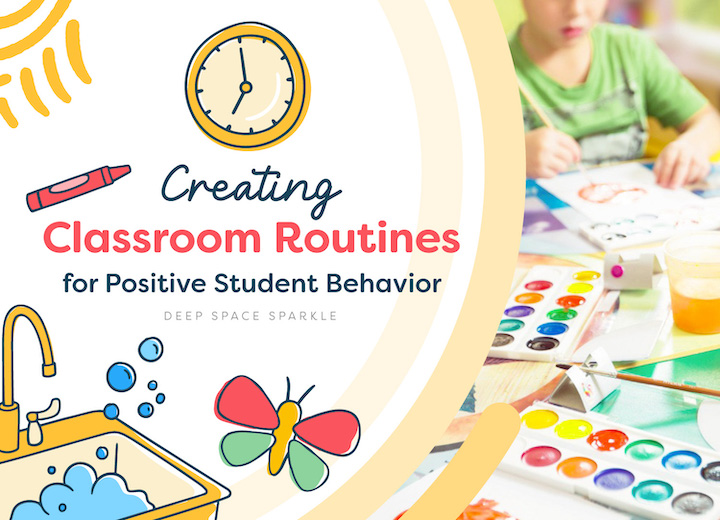












What would you suggest for a mobile art teacher who travels from classroom to classroom?
Hi Ashley! Classroom management as a mobile art teacher definitely brings up some unique issues since every classroom that you go into is set up and run differently and sometimes that leads to situations that are out of your control simply because the environment isn’t entirely your own.
With that being said, we suggest that you focus on the things that you do have control of, like the environment you’d like to create when you are in the classroom. It’s completely acceptable for you to bring in your own set of rules, procedures and routines when you enter a classroom. You will likely have your own set of materials that you bring with you, so be sure to focus on procedures with materials, like how to distribute, how to use, how to put them away, etc. Be specific on how you’d like cleanup to look and practice it. It might be different than the way the homeroom teacher prefers, so might need extra practice, but students will learn what you prefer when you are in the classroom.
You can also set the tone for the classroom when you come in. While students might default to the style of their teacher, if you’d prefer students are quiet when working rather than boisterous or you’d like to encourage class discussions when the homeroom teacher prefers silence, you can teach students procedures for when you enter the classroom.
Maintain an open relationship with homeroom teachers, but be confident in the procedures and rules that YOU want to implement when you enter the classroom, then teach them to the students just as you would if they were entering your space.
My school is a PBIS school. Students earn individual “gotchas” for showing good behavior. All of my classes are working towards earning a spin art party by earning 6 whole class Gotchas. They have to listen to my lesson, have a reasonable noise level during work time & then a great clean up to earn a whole class Gotcha. About 2/3 of my classes have earned there first art party! Then they can start earning the next one. I am also planning to do a rules & procedure review with all of my classes their first class back from winter break!
I am interviewing for an art teaching position tomorrow. The unique part is “mornings at one school and the other part of the day at another school”. I will also share the room with two other rotating teachers.
I don’t have an art teaching credential, but have taught elementary students 2-5 for 20 years.
Where would you recommend my BIG focus be if I am offered the job?